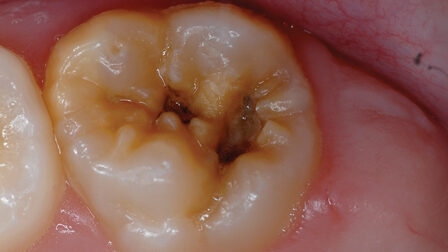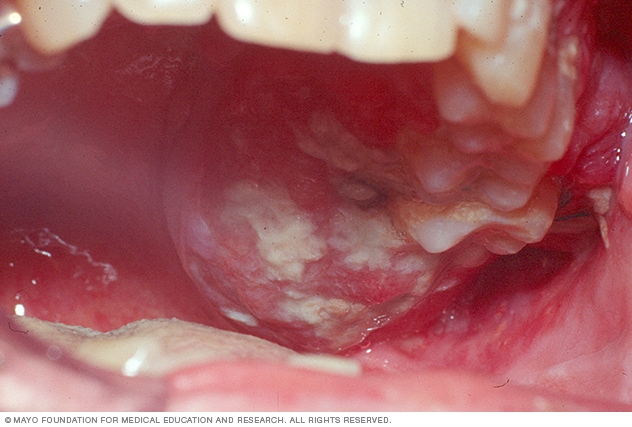Oral Health: A smile is the most inexpensive gift you can find

Does Global Health have an impact on oral health issues?
Your oral health is more important than you may realize. It can affect every aspect of our health in more ways than one. Maintaining good oral health can not only prevent different diseases in the mouth, it can also prevent long-term or chronic diseases in the body. Most people feel that if they have a pretty smile, or straight teeth they have good oral health. Trust me, it is much deeper than that. It affects the way you express yourself whether it’s smiling, speaking, eating, or showing emotions. Believe it or not, it can weigh on your self-esteem, and the way you perform at work or school.
The World Health Organization (WHO) defines oral health as a state of being free from mouth and facial pain, oral and throat cancer, oral infections, oral sores, periodontal (gum) disease, tooth decay and loss, and any other diseases and disorders of the mouth that limits an individual’s capacity in biting, chewing, smiling, speaking and psychosocial well-being. Oral health in its entirety addresses the structures of the mouth, including the teeth, gums, jaw, and surrounding tissues.
Four of the leading chronic diseases: cardiovascular disease, cancer, chronic respiratory and diabetes are often linked to poor oral health. This cost taxpayers in the US billions of dollars a year and contributes to the disability of millions of Americans. Let’s examine these key facts.
- Dental caries (cavities) is an ongoing problem in most countries and affects 60 -90% of school aged children and an infinite majority of adults.
- Periodontal (gum) disease in its severe form can result in tooth loss and is found in 15% to 20% of middle-aged adults.
- Globally, about 30% of people between the ages of 65 -75 have no natural teeth, about 50% of Americans are missing at least one tooth.
- Oral disease is more prevalent in poor and disadvantaged populations.
- In some countries, particularly parts of Africa, pulling teeth can mean infection or death.
- Statistics shows the more than 70% of the world’s population does not have access to proper oral care.
- Tooth loss or poor oral health is higher in individuals with long term health conditions such as heart disease, emphysema, hepatitis C, arthritis, liver conditions, autoimmune disease, and obesity.
Common Oral Health Problems
The most common oral health problems today are gum disease, dental caries, oral infectious diseases, oral cancer, trauma to the mouth from injuries, and hereditary lesions. Let’s dive into them below.
GUM DISEASE:
Infections formed in the mouth that are caused by bacteria, mucus, and other particles that form a plaque on the tooth enamel can lead to gum disease. The plaque that is left on the tooth hardens and forms tartar.
Periodontal disease and Gingivitis cause red, swollen gums and may cause bleeding of the gums. The longer the plaque and tartar remains on the teeth, the more harm they cause.

Dental Caries: The most chronic infectious disease in children
Chalky white or brown/black holes in a tooth are decayed areas called dental caries. Streptococcus mutan, a bacterium that thrives in the mouth, uses sugar in food to make acids. If left in the mouth for a substantial amount of time it destroys the enamel of the tooth, and a cavity occurs. It can also lead to severe infections under the gums, which can potentially spread to other parts of the body and can lead to serious fatal results.

Oral Cancer:
Oral Cancer can affect various parts of the mouth and throat. Generally, it occurs after the age of 40. Lethality is doubled in minorities, mainly African American males than white males. Smoking, excessive alcohol intake, and chewing tobacco are risk factors for oral cancer. The risk of oral cancer is higher in men, seniors, and those from low income and low education areas. Symptoms such as white spots on the tongue and inner mouth, sores in the mouth that bleeds and never heal, pain/numbness in the mouth or lips, and problems chewing, swallowing, and speaking (moving the jaw). Treatment depends on several factors such as location of the cancer, the extent of the cancer, and the actual pathology. Typically, this type of cancer is not detected until late stages which can complicate treatment options.

Oral Infectious Diseases and Orodental Trauma
Oral infectious diseases are present in individuals with comorbidities, such as Human Immunodeficiency Virus (HIV). There are several infections that could possibly accompany this diagnosis such as Aphthous ulcers, Candidiasis, Gingivitis, Kaposi sarcoma, Leukoplakia, Non-Hodgkin lymphoma, Warts, and Thrush.
Orodental Trauma is trauma due to injuries of the mouth that occurs from accidents, violence, unsafe schools and playgrounds.
Hereditary Lesions
Hereditary Lesions are usually birth defects that affect oral health. Cleft lip and cleft palate happen early in pregnancy. A cleft lip involves the tissue that makes up the top lip not joining completely before birth. This results in an opening in the upper lip. The opening can be a small fissure or large opening that goes through the lip up into the nasal cavity. A cleft palate occurs when the tissues in the roof of the mouth do not join completely.

Other Oral Health Issues
There are several other global oral health issues that affect individuals.
Halitosis (Bad Breath)
There is a plethora of things that can cause bad breath such as food, absence of brushing and flossing, gum disease, dental caries, improper fitting dentures, other health problems (digestive) and tobacco use.
If proper oral hygiene is not done regularly, particles of food will remain in the mouth between the teeth and gums causing bacterial growth which in turn leads to bad breath.

Burning Mouth Syndrome
Burning mouth syndrome is a condition in which an individual experiences a painful burning hot feeling in the mouth. It occurs frequently for months or longer. One may also experience a lack of taste or a dry mouth. Unfortunately, there is no definitive test to diagnose Burning Mouth Syndrome, however other tests may be needed to reach a true diagnosis. Treatment depends on the cause so speak with your health care provider.
Canker sores
Canker sores are small, shallow ulcers that appear in the mouth. They are often confused with fever blisters. Both can make eating and talking uncomfortable. Canker sores are more common in women, and they appear on any wet mucous area of the mouth. Canker sores can be simple or complex. Simple canker sores appear about 3 to 4 times a year and can last up to a week. They are more common in the teens and young adults. Complex canker sores are less common than simple canker sores. They typically appear more often in people who have a history of sores. 10 to 15 days is the average healing time for canker sores.
Cold sores
Cold sores known as Herpes Simplex 1 are small painful sores. The common name for cold sores is fever blisters. Cold sores belong to the herpes family and once you are exposed to the virus it lays dormant in the body for years and are often triggered by hormonal changes, environmental changes, stress, or viruses. Cold sores are spread through direct contact from person to person and most often appear on the lips, nose, or chin. Symptoms can include swollen lymph glands, sore throat, fever, sores in the mouth, gums, nose, and cheek. Although for some, the virus can cause cold sores on other areas of the body, treatment often involves over-the-counter pain medicine. Viral medication can also be prescribed from a healthcare provider.

Prevention of Oral Diseases
For the most part, oral diseases and other chronic diseases can be prevented if we follow the proper preventative methods such as:
| Decreasing the intake of sugar | Eating more fruits and vegetables that protects against all forms of cancer |
| Use fluoridated toothpaste and drinking water | Maintaining a well-balanced diet |
| Maintain a well-balanced diet | Using protective sports equipment |
| Decreasing alcohol consumption | Practicing proper oral hygiene |
| Eliminating tobacco use | Practicing Infection Control such as handwashing |
In Summary, as mentioned previously, good oral health can prevent diseases not only in the mouth. It can also prevent other chronic diseases such as cardiovascular disease, cancer, and diabetes. Following preventative measures on proper oral care can eliminate harmful bacteria and produce a healthier lifestyle for all.





